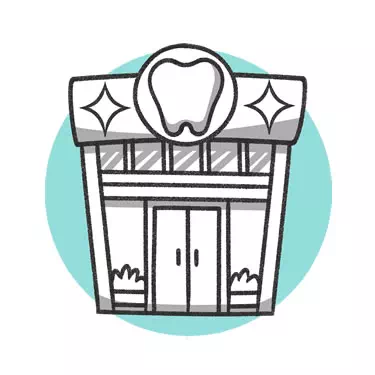It can be challenging to get your patients to say “yes” to your treatment plan. It can be even harder when it involves specialty treatment. Oftentimes practice owners think that they just need to find the right talent or the right combination of skills and sales experience.
While working closely with hundreds of practices, we’ve found that the teams that had the best results with treatment acceptance were employing a variety of tactics towards communication, planning, and presentation. A good treatment presentation requires a well-coordinated delivery of information and it’s important to understand the perspective of the patient. Anticipating their objections is key.
Patients will often reject a treatment plan for the following reasons:
- Cost: Insurance doesn’t cover everything. Many patients will refuse treatment based on affordability. Especially when it comes to oral surgery and prosthodontics procedures, the price of treatment can add up.
- Knowledge: Some patients don’t fully understand the procedure or the consequences of neglecting their pain.
- Fear of Pain: A lot of patients suffer from anxiety and dental fear. They prefer to live with their dental pain rather than sitting in the dental chair.
- Time: Treatments may take more than one appointment and some appointments can be lengthy. Patients may have difficulty adjusting their schedules to fit in treatments.
Here are 6 tips to help you convince your patients to say “YES” to treatment.
- Describe your treatment plans using simple, transparent language.
- Start by reviewing the patient’s chief complaint and how that generally fits into the picture of your treatment plan. Your patient needs to understand how the treatment plan addresses their concerns so be sure you structure any conclusion to that point.
- If the treatment plan is complex, it usually isn’t helpful to dive into details about tooth numbers, surfaces, and procedure codes. Give a more generalized overview with visual aids to explain what is required.
- Instead of explaining industry terminology, cover the time it takes to complete the treatment, if there’s any pain involved, follow up, and the cost.
- Once the patient has a grasp of what to expect, you can then dive into deeper details. But always make sure your recommendations can be easily summed up for them to repeat to spouse, family member, or friend.
- Involve the Patient:
- You should always know when it is time to stop speaking and start listening. Be willing to give the patient your full attention. Ask the patient “do you have any questions?” and let the patient guide your next response.
- Informed Consent:
- Help your patients understand the need for the procedure and what the worst-case scenario would be if they refuse. Empower them by giving them the choice to avoid the worst-case scenario in a way they will perfectly understand. (Example: a painful root canal from an untreated cavity.)
- Delivery:
- You should be enthusiastic, assertive, and have good eye contact. Always be aware of body language and tone of voice because how you say something can impact your credibility, either positively or negatively. Believe in yourself and your dental skills. Consistently communicate to patients that the treatment you want them to accept is absolutely the best therapy for them. Patients can sense if you project any doubt or hesitation.
- Telling a patient about an oral health issue is one thing, but adding visual confirmation or illustration, such as intra-oral photos or X-rays, provides undeniable proof. When patients actually see what’s going on in their mouths, it helps them believe their dental issues. This visualization gets them one step closer to accepting treatment as a solution.
- Payment can be a complicated matter for some. But if you offer alternatives—membership plans, insurance options, discount packages, patient financing companies, etc.— patients will be more likely to accept treatment when it’s presented as financially accessible and affordable.
- Patients who come to a dental practice are often anxious, sometimes in pain, and usually seeking empathetic care. To communicate with these patients effectively, you must be fully aware of these physical and emotional realities.
- Always present information in a way that allows even the most terrified and uncomfortable patient to feel safe and cared for. Patients should see you as an ally who is working to assist them in every way. They must hear the sincerity behind the facts and feel the caring behind your words. By earning their trust, they will believe that the treatment plans you recommend are the best and most appropriate path for them.
- Never dismiss your patient’s concerns. Validate them and offer reassurance with solutions and advice. “It can for sure feel scary to undergo a procedure like this” “I understand you’re worried about the recovery time…” “Some of my patients find it helpful to…”
- Sometimes anxious patients ask a lot of questions — answer these questions confidently and accurately. Patients are reassured that they are in the presence of an educated and competent professional. Know procedures, techniques, products, and how to speak about all of them effectively. Never be unprepared.
- Patients are looking for validation of their treatment choices. They want the assurance that they have chosen the right office and the right doctor for their dental care. When team members introduce the treatment opportunities and praise the doctor’s care, they are fulfilling the patients’ need for treatment validation.
- Involve your entire team — assistant, hygienist, and all providers. It takes many conversations with a patient before fully understanding and accepting recommended treatment. That means it’s a must that you and your team are on the same page and that you deliver the same message at every visit.
- If you weren’t able to close the treatment plan today, ask the patient when might be a good time to follow up with them. Inform them that they will need to plan in advance, especially if your specialist’s schedule is limited.
- Do regular follow-ups to answer questions, provide clarifications, and more.
- Be persistent about treatment urgency without being pushy.
- If you ultimately fail to close the treatment plan, try to document and track the reasons why. This will be your best learning tool.
There are dozens of other aspects to focus and consider which we’ll dive into in future articles. What tips and tricks do you have for getting your patients to say yes to treatment?






